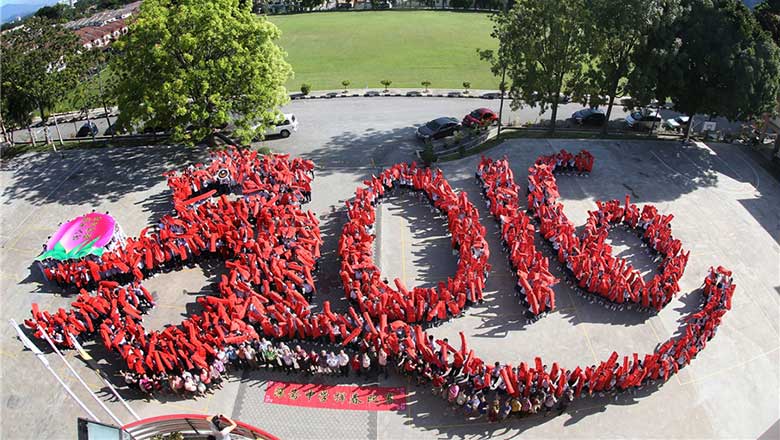Chinese restaurants thriving beyond takeout
Updated: 2016-02-01 11:36
By Niu Yue in New York(China Daily USA)
|
|||||||||
The Chinese restaurant industry in the US is moving away from typical takeout toward fancier establishments, according to Ming Lin, executive director of the Chinese American Restaurant Association (CARA).
Lin said that in the past decade there has been a gradual decline in the profit margin of "four dishes plus one soup"-type menus, Chinese fast food that usually prices under $6 per meal.
The number of such low-end restaurants registered in CARA has been shrinking at an annual rate of 7 percent, down from 15,000 a decade ago to almost 8,000 now, Lin said.
Zheng Dazhou, owner of a Chinese takeout restaurant in Elmhurst, Queens, and a first-generation Chinese immigrant to the US, told China Daily that he was going to upgrade his business to a more lucrative model.
"The net margin of economic takeout food was usually under 15 percent," he said. "However, the average margin for a fancier Chinese restaurant could end up with a margin of nearly 35 percent."
Zheng said he used to operate four branches of the same low-end takeout restaurants, but now only the Elmhurst one remains open.
After the Chinese Lunar New Year, he will renovate the interior of the Elmhurst restaurant with "Canton nutritional stylistics". "Our targeted price per person will be $25," Zheng said. "I also want to recruit a new staff in the restaurant with better English fluency."
Yiming Wang, owner of Cafe China restaurant, which is rated one star by Michelin, and of China Blue, both in Manhattan, said she wants to make the Chinese restaurant a place for cultural experience rather than a takeout bargain.
"Most of the low-end takeout restaurants are mainly selling Americanized Chinese food, which are standardized fried ingredients such as pork or chicken with sweet-flavored sauce," said Wang. "My restaurant features good decor and service."
Wang's business card also carries the title of designer. She said some of her celebrity clients visit just because they like the well-mannered waiters and waitress.
The change in approach applies not only to New York City but also to Washington.
China Boy, a top-rated takeout Chinese restaurant with limited seating in Washington's Chinatown, announced a long-anticipated upgrade recently.
Feedback on Yelp on the restaurant's food has been overwhelmingly positive, except for the "shabby and crowded dinning environment", one commenter wrote.
"They have the best fried rice in the area, and it's a good price," said Laura Sun, a regular customer. "Bad things are cash-only policy and limited space to sit inside."
Liu Jiachang, the owner of China Boy, said he was planning to retire soon and the upgrade is on the way.
China Boy had only two tables in its dine-in area with a maximum capacity of 10 diners indoors simultaneously. However, its kitchen was disproportionately spacious, part of which will be renovated into a dining area.
"I am in my 70s and not in the mood for any change," Liu said. "This project will be handled by my son. After my retirement, this restaurant will be totally new."
The impression of Chinese food in the United States is also changing, experts said.
"Most Americans today view Chinese cuisine as a step above fast food but still as a quick, cheap meal," said Charlotte Brooks, a professor of China studies at City University of New York. "For many people, Chinese food is the quintessential takeout meal or buffet option."
Chinese food was also one of the first and only ethnic foods most Americans encountered a generation or two ago, as there were Chinese restaurants even in many small towns in the US, Brooks said.
"American food culture is far more developed, so Chinese food no longer seems as unusual or exotic as it once did," she said.
"The current trend of Chinese food going high-end is a welcome change," Brooks said. "Most Americans still tend to think of Chinese food as Cantonese food and as a quick, cheap meal. This ignores the incredible diversity, nuance and sophistication of Chinese food."
Brooks said that there was nothing wrong with the typical inexpensive Chinese restaurant, but the menus at such places were almost always standardized and limited, and the food was still more of a Chinese-American hybrid than actual Chinese.
"High-end Chinese food will give Americans a glimpse of the sophistication and nuance of Chinese regional cuisines and may put pressure on low-end Chinese restaurants to improve their offerings."
Changes and upgrades in the Chinese restaurant industry moved with the flow of Chinese immigration, according to research by Yong Chen, a professor of Asian-American history at the University of California-Irvine.
In the 19th century, the earliest Chinese-run restaurants tended to serve Western food, not Chinese food, Chen said. By the 1890s, middle-class "slummers" thought it quite adventurous to visit Chinatowns and eat at Chinese restaurants.
Long Yifan in New York contributed to the story.
(China Daily USA 02/01/2016 page2)

 China's 'Moon Walker' sends back stunning HD photos
China's 'Moon Walker' sends back stunning HD photos
 Starbucks, office rents and CEOs form alternative outlook on China
Starbucks, office rents and CEOs form alternative outlook on China
 China's most beautiful wetlands
China's most beautiful wetlands
 Premier Li takes Spring Festival greetings, and gifts, to old folk
Premier Li takes Spring Festival greetings, and gifts, to old folk
 International friendship blossoms in peony painting
International friendship blossoms in peony painting
 Culture Insider: Little New Year
Culture Insider: Little New Year
 Global celebrations mark Chinese New Year
Global celebrations mark Chinese New Year
 Motorcycles ride home for Spring Festival reunion
Motorcycles ride home for Spring Festival reunion
Most Viewed
Editor's Picks

|

|

|

|

|

|
Today's Top News
National Art Museum showing 400 puppets in new exhibition
Finest Chinese porcelains expected to fetch over $28 million
Monkey portraits by Chinese ink painting masters
Beijing's movie fans in for new experience
Obama to deliver final State of the Union speech
Shooting rampage at US social services agency leaves 14 dead
Chinese bargain hunters are changing the retail game
Chinese president arrives in Turkey for G20 summit
US Weekly

|

|








